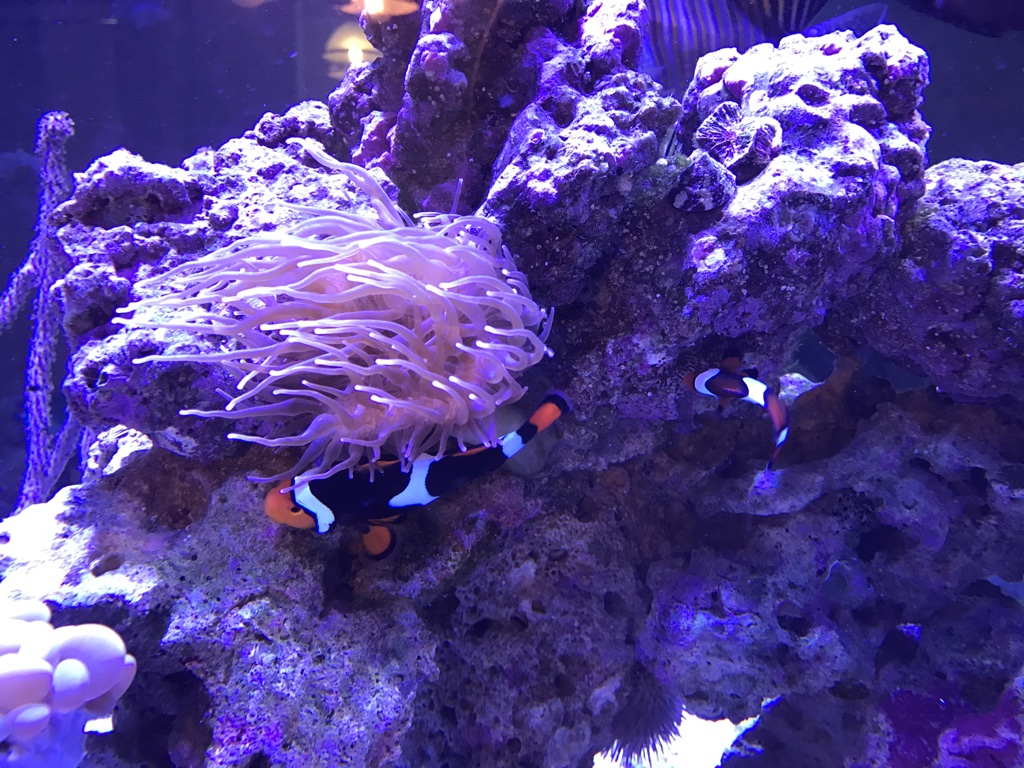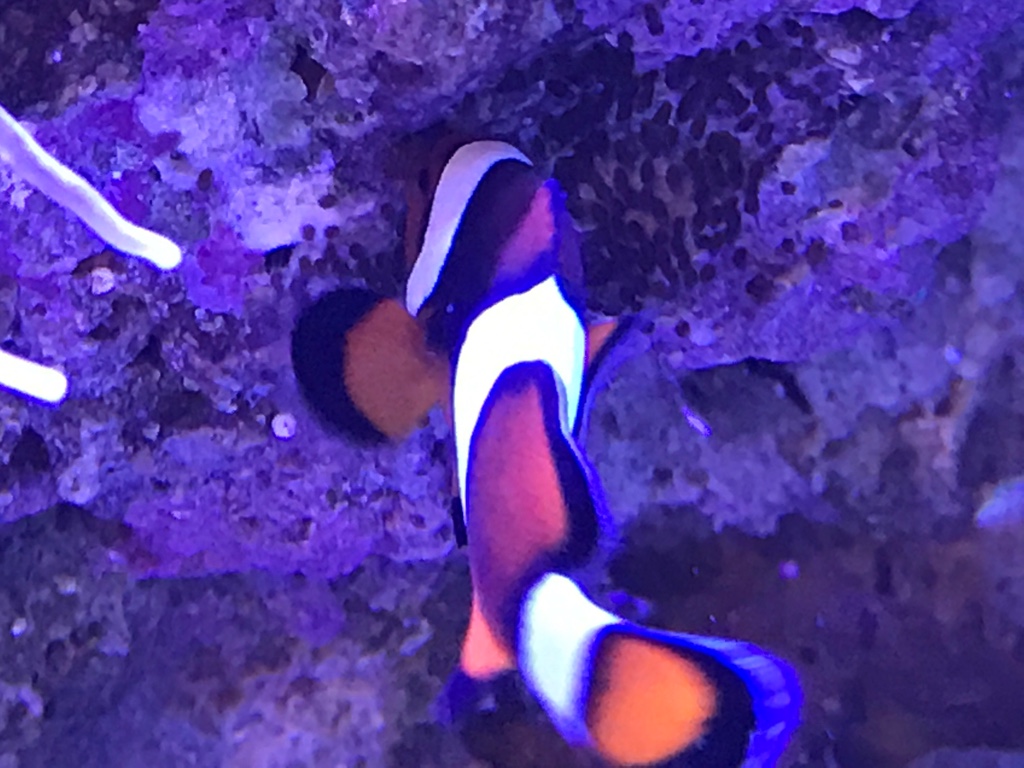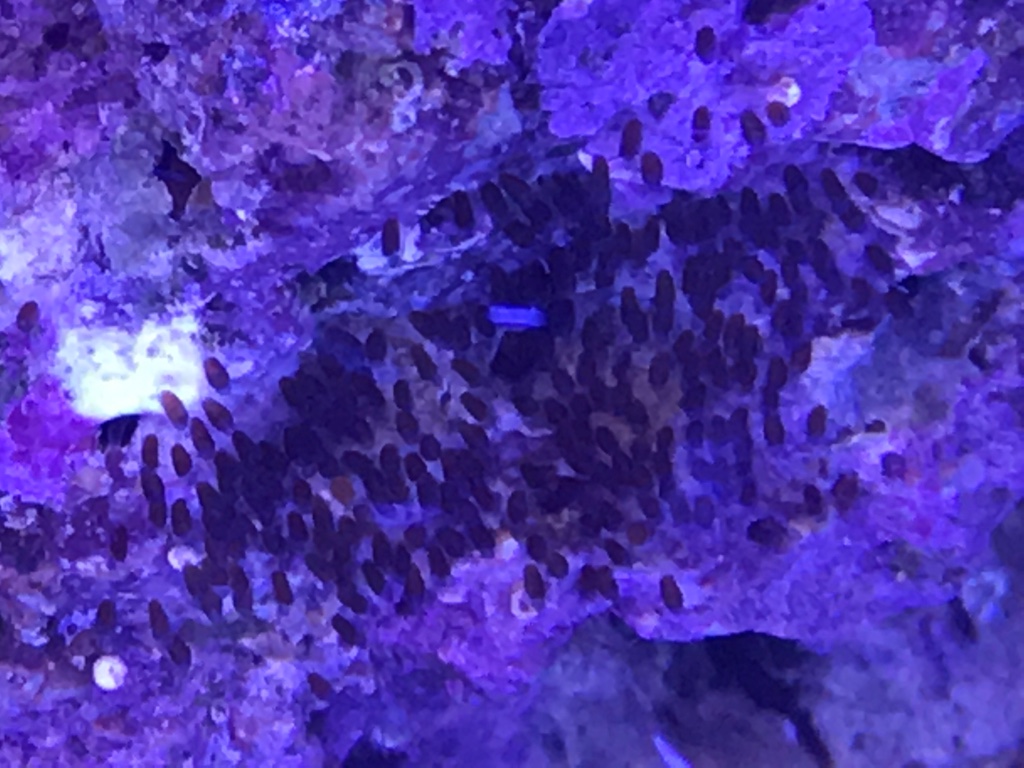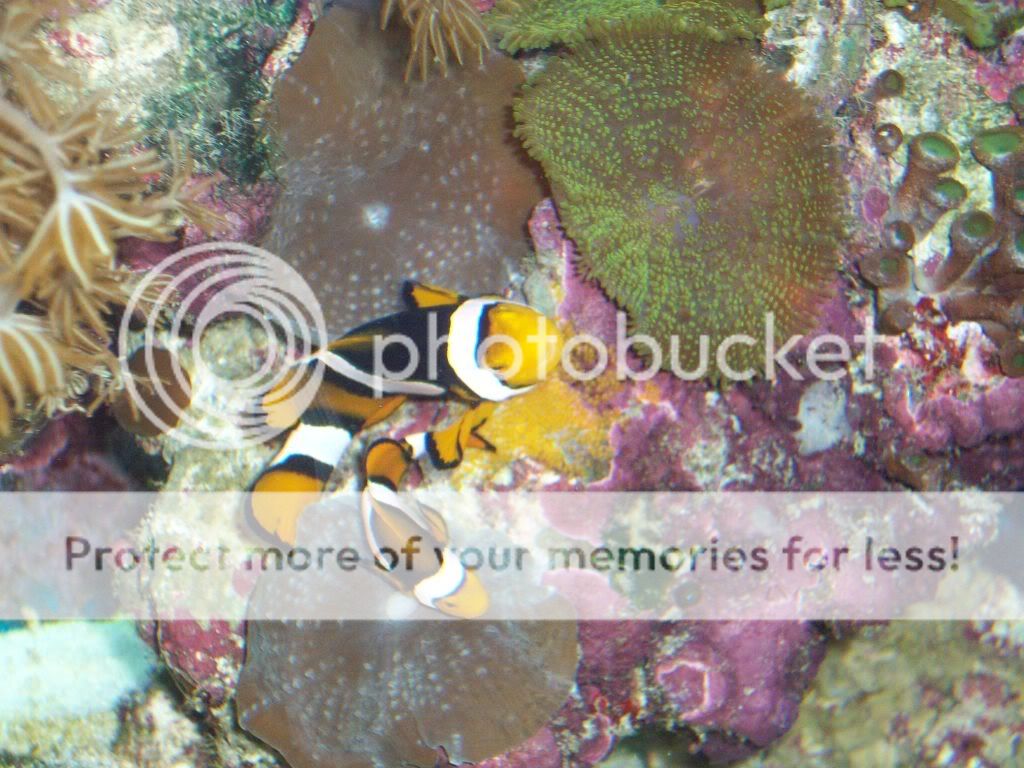So I have a pair of clownfish in my 220 that live in a BTA. This morning my 10 year old called me over to tell me that the clownfish had eggs. I told him that I didn't think they had had eggs, but I went over to look at what he was talking about and I have no idea what they are. They tiny little round dark things on the underside of a rock right next to their anemone. They seem to be attached to the rock with something clean and kind of wave around a little in the current. Both of the clownfish seem to spend a lot of time next to these things and putting their mouths on them. Is it possible that they are clownfish eggs?
I've attached the best pictures I could get.
Here are the clownfish and their anemone. The potential eggs are toward the right next to the male clownfish.

Here's a couple close ups of what I'm talking about:


I've attached the best pictures I could get.
Here are the clownfish and their anemone. The potential eggs are toward the right next to the male clownfish.

Here's a couple close ups of what I'm talking about:



